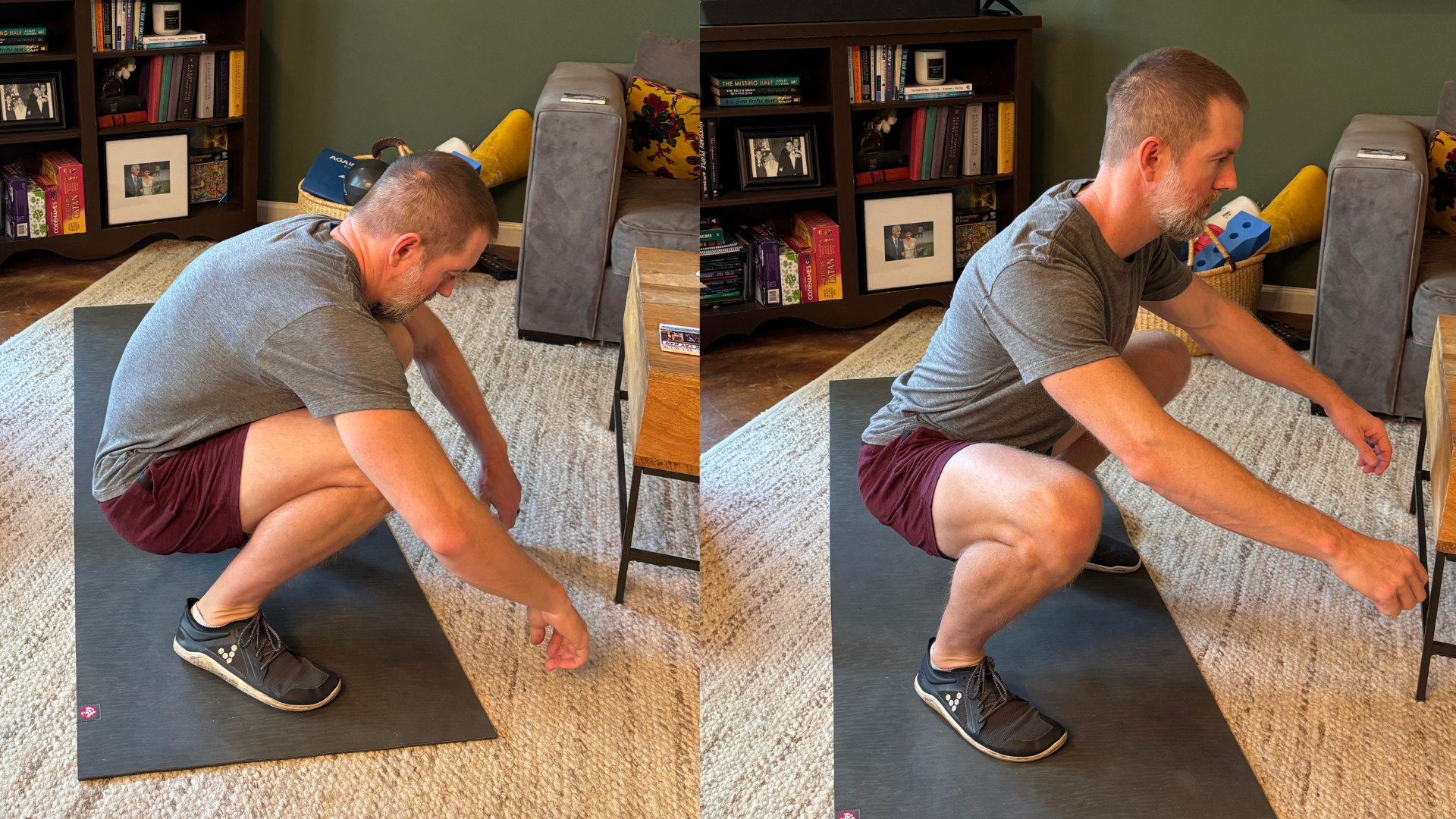How Much Exercise is Enough?
Written By Kyle Ligon - MovementLink.FIT Head Coach
How much exercise is enough? This first step is often missed - you’ve got to ask yourself, “Enough for what?”
Personally, in addition to being healthy and having good body composition, for as long as possible in my life, I want to be able to:
Run, play, and participate in a variety of rec sports, games, and events,
Go for long, challenging hikes with the ability to carry additional weight in a backpack if needed,
Carry heavy coolers, luggage, stand up paddle boards, and move furniture,
Carry tons of groceries and be able to go up and down stairs with them,
Get on and off the floor with ease,
Have the mobility and stability to have movement choices,
All while living pain free.
This list of physical tasks form the basis of MovementLink’s Benchmark Week workouts to provide us insights into the level and balance of our fitness and functionality, so that we can strategize and fill any gaps.
The goals of the MovementLink Method are to help everyday people balance functional performance, body composition, joint and tissue health, and overall health and wellness. For this article, it’s important to note that my personal goals do not, at all, prioritize competing in an exercise sport (like CrossFit, powerlifting, Olympic weightlifting, bodybuilding, etc.), so the way and the amount I exercise is completely tailored to transferring as effectively as possible into the life I want to live. Like most, I want to balance my family, social life, hobbies, and my full-time job, and although I do own a gym and enjoy my time in the gym, I do not want to spend excess time in the gym working out…I want to live life. Trust me, 1 hour of exercise following a well designed and well rounded program, 4-6 days a week, on most weeks is enough to make your long-term results heroic.
What I find amazing is that there is effectively 100% overlap between the best indicators of longevity, quality of life, and the factors that would make our current life as amazing as possible…we don’t have to choose!
The areas targeted by the MovementLink Method:
Mobility/Balance,
Speed/Power,
Strength/Muscle,
Lactate Thresholds/VO2 Max, and
Endurance/Stamina.
For deeper descriptions of each of these and how they are worked into MovementLink’s workout program, check out my article Choosing Which Days to Workout.
Let’s go through minimal doses for each of these areas:
Mobility / Balance
We really need exposure on most days, but the daily amount needed is pretty minimal. If you balance, even for just 30 seconds to 1 minute on each leg a day and progress the challenge over time - like by closing your eyes, doing Y-balance stuff, or by using something like a slack block - progress is profound.
Mobility requires more time, but not as much as most people think - 10 minutes every day goes extremely far. You can also be very time efficient by being purposeful about developing mobility and movement patterns in warm-ups, in your workouts, and in your cool-downs like we do in our classes. 10 minutes a day plus the time during workouts can add up to a few hours a week of mobility work.
Habit to Create: 10min of Mobility Every Day at Home
Speed/Power
Unlike strength and hypertrophy training which is limited in how much our body can handle each week, our body can handle and recover from a lot of speed and power work. However, the exposure required for speed/power-specific workouts is actually pretty minimal. Speed and power can be developed at a variety of weights (really, anything below 75% of a max) and is more dependent on putting 100% effort into performing an exercise as fast or hard as possible. Zero to once a week of specifically focused speed/power training is plenty as long as you are incorporating explosive exercises in your high-intensity workouts. Exercises like box jumps, kettlebell swings, cleans, jerks, dumbbell snatches, and wallballs are all great and as long as you are actually performing them explosively. This is why I prefer to workout For Intent, Intensity, and Technique (FIIT) instead of taking scores in workout because it allows me to prioritize things like speed and power in certain exercises and workouts even when adding that extra effort into reps would be a detriment to what would be a better time or “score” in a workout.
Strength/Muscle
These consist of heavier, harder exercises or performing sets to near or at failure. Although we can handle about 2 really hard workouts that challenge upper body pulling, 2 for upper body pressing, and 2 for the lower body each week, 1 upper and 1 lower on most weeks is plenty.
While it’s easy to add muscle building stimuli into our high intensity work, strength work (75% or more of a 1 rep max) really needs to be separated out on its own most of the time. Separating it out allows us the ability to add maximal focus on the technique and effort required for quality strength sets.
Because strength and muscle work have so much carry-over into one another (Check out my article on the Spillover Benefits of Cross-Training), it’s most important that you get at least 1 or the other in each week. Here is how our MovementLink Macrocycles Look:
Base #1 - 2 hypertrophy-focused workouts offered for lower body, upper body pressing, and lower body pulling each week.
Base #2 - 2 hypertrophy-focused workouts offered for lower body, upper body pressing, and lower body pulling each week.
Strength #1 - 1 strength-focused and 1 hypertrophy-focused workout offered for lower body, upper body pressing, and lower body pulling each week.
Base #3 - 2 hypertrophy-focused workouts offered for lower body, upper body pressing, and lower body pulling each week.
Strength #2 - 1 strength-focused and 1 hypertrophy-focused workout offered for lower body, upper body pressing, and lower body pulling each week.
Peaking #3 - 1 very heavy, strength-focused and 1 hypertrophy-focused workout offered for lower body, upper body pressing, and lower body pulling each week.
So, to sum it up, minimally, you should try and work in strength or hypertrophy exposure for lower body, upper body pressing, and upper body pulling at least once a week on most weeks and vary how heavy that exposure is throughout the year.
Lactate Thresholds/VO2 Max
This is the high intensity stuff and our program is biased towards this because not only is it incredibly effective, but as you can see from reading the above and below areas, because we are very strategic with our workout programming, we can integrate exposure to many of the other areas within our high intensity training, making for extremely effective use of our time. Although 1 exposure a week is likely an adequate minimal dose here, because of the efficiency of being able to include work in other areas at the same time, this style is typically included in 3-4 of my workouts each week.
Endurance/Stamina
Again, because of all the spill-over benefits from the high-intensity stuff into endurance and stamina, the amount of endurance-specific training you need, if you’re participating in high-intensity training, is relatively small. Although this is another area like speed/power in which you can add a lot of extra work each week, one long (30 minute or more), slow Lactate Zone 2 Cardio workout is enough. Your primary goal should be to reach the minimal dose of all of these listed areas, but, after that, if you were to add an additional workout, an additional Lactate Zone 2 workout would be a very good choice.
The key point I want to make in this article is that the minimal amount of exercise you need to achieve all the results you’re after is likely way less than you think. I am making this point to help fast track your progress and help you avoid the Typical Stages of a Fitness Journey where instead of focusing on exercise and building healthy habits into your lifestyle, most people focus on exercise alone and default to trying to just add more and more. I do believe that 4-5 days of a week of well planned and strategized, functional exercise that spans speed, power, strength, muscle building, anaerobic thresholds, endurance, mobility, and stability may be the single greatest thing you can do for your life, your body, and your health, but it is far from the only thing that has huge impacts on your results. By training in this way your performance can continue to improve for 20+ years. Does that mean you’ll get the full results you’re after? Actually no.
There are 4 main categories I like to focus on with people when trying to get them the results they are after:
Sleep
Non-Exercise Activity
Nutrition
Exercise
If you want to dig deeper into these, check out my article, The Specifics of a Healthy Lifestyle.
Most people put almost 100% of their efforts towards their goals into the exercise bucket with little to no attention and effort put into the other 3. You don’t need to be anywhere near perfect, but if you have healthy habits across all 4 of these categories and you adhere to your strategies reasonably well, you will get dramatically better results than only adding more workouts to your exercise habit. In fact, there is trap that people fall into who are only focused on their exercise habit alone and putting too much emphasis on your gym performance can actually set you back years! Check out my article on Being Fooled by Your Increasing Exercise Performance.









